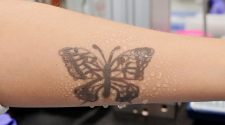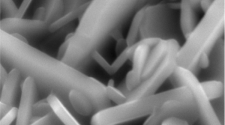Keen gardeners will be aware of snow mould, the fungal disease that causes off-white patches on the lawn in early spring after snow has melted. But then there’s this, a blanket-like cover of strange white material in a field below Screel Hill on the Solway Firth. In all my years of nature watching, I’ve never seen anything like it before.
Initially, I sped past it to my favourite beach with Connie the springer, thinking the residue was salt, like the salt pans in Portugal. After all, this reedy hollow often has a pool of water in it. But on reflection, it was too far from the sea to be saltwater. On previous visits here I had assumed (always dangerous with unnatural history) that this pool fluctuated with the water table – either that or it just held rainwater. There are similar such small lakes on the west coast of Ireland, called turloughs; they appear and disappear according to whether the rainwater can drain into the ground. There is a turlough in Wales, one in Norfolk and three in Northern Ireland. There are, however, none in Scotland.
On closer inspection, I discovered a vast, fibrous blanket with similar properties to handmade paper. It was smooth on the surface and rough underneath where the grasses and reeds clung to it, and you could even write on it. It crunched under my feet – and under Connie’s – and when I cut some bits out with scissors, it felt like cutting a cereal box; as a primary school teacher, it was like being back in the classroom. The natural sculptures it made were fascinating too: galleon-like, as it clung to the reed tussocks. Think lampshades with cheap paper stretched over the wire.
So what is this mysterious substance? It appears to still be snow mould, only the fungal spores have multiplied at an unusually fast rate. It is likely that this spot had the perfect microclimate of initial snow cover, temperature and moisture for it to flourish. But why it is so papery is a puzzle and, on investigation, I have found no photographs, illustrations or indeed any written records of such a large covering.
We don’t stay too long in the end because, as with other moulds, their spores can trigger an allergic reaction in some people, and indeed dogs – “Connie, come here now!”















